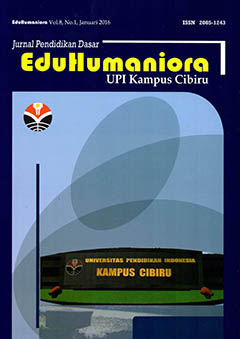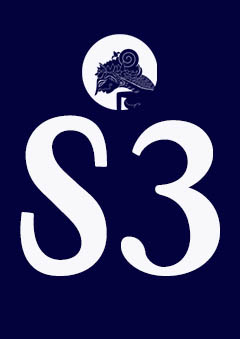THE STATE OF BASIC EDUCATION IN NIGERIA BORDER COMMUNITIES
Abstract
The study investigated the state of basic education in the Nigerian international border communities of Sokoto State. A descriptive survey research design was adopted for the study. A multistage sampling technique was adopted for the selection of 597 out of 3,876 respondents. A 29 items four-point-Likert scale Researcher’s designed questionnaire that was translated into Arabic and Hausa languages with psychometric properties of content validity 0.80, 0.75, and 0.87and a reliability coefficient of 0.76, 0.82, and 0.71 while the interview items have a content validity of 0.77 and a reliability coefficient 0.78 was used to elicit the needed data. descriptive and Inferential statistic was used to analyze the data. Findings revealed that parental, teachers, governmental, and facilities factors pose challenges to basic education in the border areas, among others. Educational policymakers are recommended to take necessary measures to decentralized the curriculum of the education system in Nigeria to takes care of the educational needs of a different society.
Keywords
Full Text:
PDFReferences
Adam, N. B. (2011). Giving knowledge for free: The emergence of open educational resources.International Journal of Educational Development. 22, 339-352.
Adeolu, L.G., & Fayomi, O. (2012). The political and security implications of cross border migration between Nigeria and her francophone Neighbors. International Journal of Social Science Tomorrow, 1(3), 7.
African Region & World Bank (2003). Education sector strategy.Washington DC: World Bank.
Ahmed, A. & Carron, G. (1989).The challenges of basic Education for All.Prospects, 14(4),23-29.
Aina, F. (2010). Addressing development challenges of border communities. Retrieved from: www.sunda.dailytrust.com/index.p hp?development.border
Alexander, R. (2008). Education for all, the quality imperative, and the problem of pedagogy. CREATE pathways to access No. 20 Consortium for Research on Educational Access, Transitions, and Equity: University of Sussex. Doi : 2011/ef/efa/mrt/pi/08.
Anaxagorou, G. (2007).Teachers’ and community stakeholders’ perceptions of school- community relations in Cyprus. International Journal ofparents ineducation.1(10)53-58.
Asiwaju, A. I. & Adeniyi, P.O. (1990). Borderlands in Africa: A multidisciplinary and Comparative Focus on Nigeria and West Africa. Lagos: University of LagosPress.
Bonchuk, M.O. (2014). Nigeria-Cameroon borderland:prospects of economic cooperation and integration, American Journal of Social Issues and Humanities, 4(2)29-111, ISSN: 2276-6928.
Boudreau, J.W. & Ramstad, P.M. (2007). Beyond HR: The new science of human capital. Boston: Harvard Business School Press
Catholic Relief Services (2007). 2007 Annual Report - Catholic Relief Services. Retrieved from: www.crs.org › sites › default › files › AR_200
Combs, S. (2011). Bordering the future. Retrieved from www.windowon- state/goverment.htm
Denison, E.F. (1962). The source of economic growth in the United States and the alternative before. New York: Committee for Economic Development.
Ebong, J. M. (2006). Understanding the economics of education. Port Harcourt: Eagle Lithograph press.
Fagerlind, I. & Saha,I. J. (1989). Education and national development: a comparative perspective. Oxford: Pergamon Press.
Federal Republic of Nigeria (2004).National policy on education. Lagos: NERDC Press.
Folami, A. O. & Karimu, O. O. (2010). Climate change and cross border crime in Nigeria. Paper presented at the 250th Anniversary Conference Organized for the Royal Norwegian Society of Sciences and Letter on Climate Change and Security in Trondheim, Norway.
Grabowski, R & Shields, M. (1996).Development economics. U.S.A.: Blackwell Publishers Incorporation.
Hadley, S. (2010). Seasonality and access to education: the case of primary education in sub-Sahara Africa. CREATE pathways to access No 31. Consortium for Research on Educational Access, Transitions, and Equality: University of Sussex. Doi : 2011/ef/efa/mrt/pi/08. Retrieved from: www.create-rpc.org
Harbison, F.(1973).Human resources as the wealth of nations. New York: Oxford University Press.
Lewin, K. M. (2010). Access to education in sub-Sahara Africa: patterns, problemsand possibilities. Comparative Education.45 (2) 151-174. Doi : 2011/ef/efa/mrt/pi/08. Retrieved from: www.create- rpc.org.
Mark, L. B., Benwari, N. & Abraham, L. N. (2010).Issues, concerns, and implications of massification of basic education for sustainable development in Nigeria. African Journal for the study of educational issues.4,3-9. Retrieved from: www.ajeduionline.org/AJEDUI- Oct/14%20Oct.rtf
Mayer, D. (2011). Forty years of teacher education in Australia: 1974-2014. Journal of Education for Teaching, 40(5), 461-473.
Mergel, T. (2011). Modernization. Mainz: Institute of European History.
Merwe, V. A. (2010). Does human capital theory explain the value of higher education? A South African case study. American Journal of Business Education. 3(1),107–16
Nigeria: New Human Development Report (2017), retrieved from www.Human%Development%20In dex%201-AfricaFocus.htm.
Nigeria ranks on the Human Development Index.Retrieved from www.nigiera-ranks-142nd- on- human-development-index.htm.
Oghenekohwo, J.,Adekola,G.,& Iyunade, O.T.(2011). University carrying capacity andincidence of higher education efficiency in Nigeria. African Journal of Educational Studies 4 (1) 127-142
Okoh, A. O. (1998). Personnel and human resources management in Nigeria. Lagos: Amfitop Books.
Oliveros, L.A. (2002).Border integration in the context of convergence in Latin America and the Caribbean. Venezuela: permanent secretariat of SELA Caracas. Doi:sp/Di No 05-11.
Omodia, S. M. (2012). The family as a vehicle for sustainable democracy in Nigeria. Journal of family development. 1(1),83.
Oscar J. M.. (2009). Border conflict, border fences, and the "Tortilla Curtain" incident of 1978– 1979. DOI: 10.1353/jsw.2008.0012
Price, F. (2010). The Bakassi peninsula: the border dispute between Nigeria and Cameroon. Retrieved from: www.icj- cij.org/icjwww/ipresscom/ipress20 02/ipresscom200226_20021010.
Sambo, A. A. (2008). Research methods in education. Edo: Stirling-Horden Publishers.
Schultz, T. W. (1981). Investing in the people-the economy of population quality. Berkeley: University of California Press.
Singh, K. & Rangnekar, U.S. (2000). A profile report on a pre-project survey of border area development programmes in developing countries. Retrieved from: www.pbplanning.gov.in/pdf/Annex ure-VI.pdf.
The Research Advisors(2006). Sample size table. Retrieved from: http://research-advisors.com.
Thomas, H., Smith, R.R. & Diez, F. (2013). Human capital and global business strategy.New-York: Cambridge University Press.
Thorat, S &Attewell, P (2013). The Legacy of Social Exclusion: A Correspondence Study of Job Discrimination in India. Economic and Political Weekly, 42,(41) 4141-4145.
United Nations Children’s Education Fund (2010).The State of the World’s Children'seducation and development. New York: UNICEF
United NationsEducation Scientific Children Organisation (2011). Institute for statistics website. Retrieved from: www.unescoofnigeria.org/statistics .htm
United Nations Development Programme (2019).Human Development Reports. Retrieved from: www.http:/http://hdr.undp.org/en/2 019-report.
Uwheraka, T. (2005).Analysis of space dimensions and physical facilities in senior public secondary schools. (Unpublished master’s Dissertation). Delta State University, Abraka.
Wills, N. (2010). School-based professional support by Border Community Development Agency. Retrieved from: www.voiceofnigeria.org/Bordersecub.htm
World Bank (2012). Education sector strategy. Washington DC: World Bank.
Wu, W., İsmail, M., Yi, S., Joshi, S., Qamer, F.M. & Bisht, N. (2016). Coping with borders: Yak raising in transboundary landscapes of the Hindu Kush Himalayan region. In N. Wu, S. Yi, S. Joshi & N. Bisht, eds. Yak on the move: Transboundary challenges and opportunities for yak raising in a changing Hindu Kush Himalayan region, pp. 3–22. Kathmandu, ICIMOD
Yusuf, A., Amali, I. O. O. & Ajidagba, U. A. (2011). Teachers’ assessment of the quality of the basic education in the border area of Kwara State, Nigeria. African Journal of Historical Sciences in Education.7 (2), 60-67.
Zepeda, A. (2011). Border region school district forced to disenroll’ legitimate U.S citizens. Retrieved from www.immigration- arizona,education-nationworld.html.
Ziyauddin, K. M. & Kasi, E. (2009). Dimensions of Social Exclusion: Ethnographic Explorations. Newcastle: Cambridge Scholars Publishing. Retrieved from: www.c-s-p.org/flyers/978-1-4438- 1342-6-sample.pdf
DOI: https://doi.org/10.17509/eh.v13i2.29873
Refbacks
- There are currently no refbacks.
Copyright (c) 2021 EduHumaniora | Jurnal Pendidikan Dasar Kampus Cibiru
EduHumaniora: Jurnal Pendidikan Dasar
Published in collaboration Program Studi PGSD UPI Kampus Cibiru
and
HDPGSDI
This work is licensed under a Creative Commons Attribution-ShareAlike 4.0 International License.















